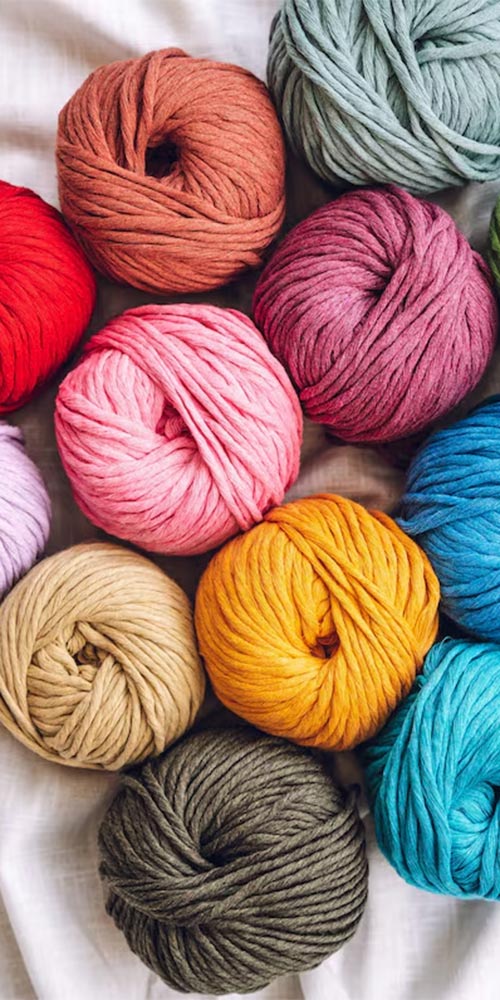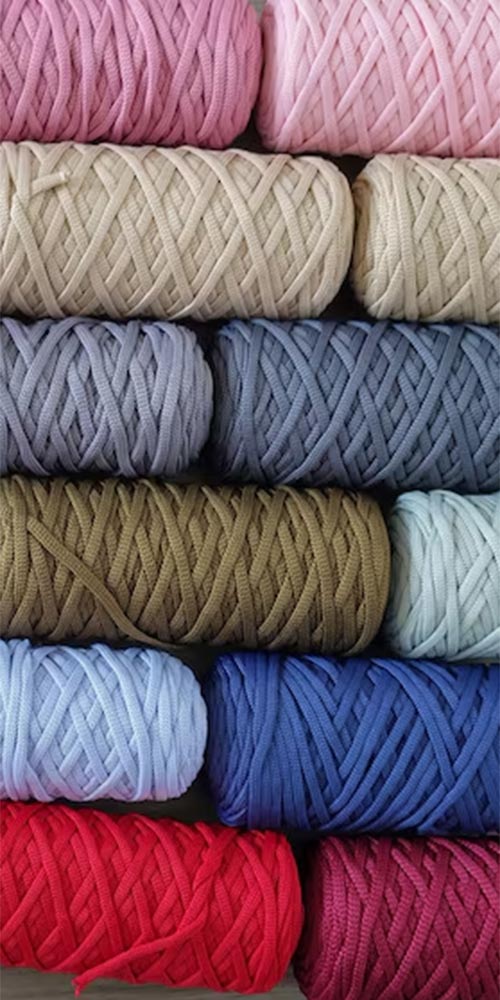Natural vs Synthetic Fibers: Pros and Cons
When it comes to knitting, choosing the right type of yarn is essential for achieving the desired look, feel, and durability of your project. Yarn can generally be divided into two main categories: natural fibers and synthetic fibers. Each type has its own strengths and weaknesses, and understanding these differences will help you select the best yarn for your next knitting project.
Natural Fibers
Natural fibers are sourced from animals or plants, such as wool from sheep, cotton from cotton plants, and silk from silkworms. They are known for being soft, breathable, and comfortable, making them a favorite among knitters who appreciate warmth and natural texture. Natural fibers also have excellent moisture-wicking properties, helping to regulate body temperature and keep you comfortable in different weather conditions.
🏆 Advantages of Natural Fibers
✅ Breathability – Natural fibers like wool and cotton allow air to circulate, keeping you comfortable in different climates.
✅ Softness – Animal-based fibers such as alpaca and cashmere are known for their luxurious softness.
✅ Moisture Absorption – Natural fibers can absorb moisture without feeling damp, which helps regulate body temperature.
✅ Eco-Friendly – Since they are biodegradable and renewable, natural fibers have a smaller environmental impact.
✅ Dye-Friendly – Natural fibers absorb dyes well, resulting in rich and vibrant colors.
⚠️ Disadvantages of Natural Fibers
❌ Shrinkage – Wool and other animal fibers can shrink when exposed to heat and water.
❌ Pilling and Shedding – Fibers like wool and cashmere are prone to pilling over time.
❌ Cost – High-quality natural fibers can be expensive.
❌ Durability Issues – Plant fibers like cotton can weaken and stretch over time.
❌ Allergies – Some people may be allergic to animal-based fibers like wool.
🌿 Common Types of Natural Fibers:
| Fiber Type | Source | Characteristics | Best For |
|---|---|---|---|
| Wool | Sheep | Warm, elastic, moisture-wicking | Sweaters, scarves, hats |
| Cotton | Cotton plant | Soft, breathable, lightweight | Summer clothing, baby clothes |
| Silk | Silkworms | Shiny, smooth, strong | Luxury items, shawls |
| Alpaca | Alpacas | Soft, hypoallergenic, warm | Scarves, sweaters |
| Linen | Flax plant | Crisp, cool, strong | Summer tops, light blankets |


Synthetic Fibers
Synthetic fibers are man-made materials, usually derived from petrochemicals like polyester, nylon, and acrylic. They are engineered to be strong, durable, and resistant to shrinking and fading. Their affordability and versatility make them popular for everyday clothing and home textiles. Synthetic fibers are also easy to care for, as most can be machine-washed without losing shape or color.
🏆 Advantages of Synthetic Fibers
✅ Durability – Synthetic fibers are resistant to stretching, shrinking, and fading.
✅ Affordable – Synthetic yarns are typically more budget-friendly than natural fibers.
✅ Lightweight – Many synthetic fibers are lighter than their natural counterparts.
✅ Moisture-Wicking – Some synthetic fibers repel water and dry quickly.
✅ Easy Care – Most synthetic fibers can be machine-washed without shrinking or losing shape.
⚠️ Disadvantages of Synthetic Fibers
❌ Less Breathable – Synthetic fibers tend to trap heat and moisture.
❌ Less Soft – While soft varieties exist, synthetic fibers are generally not as soft as natural ones.
❌ Environmental Impact – Synthetic fibers are derived from petroleum and are not biodegradable.
❌ Static and Pilling – Synthetic fibers are more prone to static electricity and pilling.
❌ Poor Dye Retention – Colors on synthetic fibers may fade faster over time.
🧪 Common Types of Synthetic Fibers:
| Fiber Type | Composition | Characteristics | Best For |
|---|---|---|---|
| Acrylic | Plastic-based | Soft, lightweight, inexpensive | Hats, scarves, blankets |
| Nylon | Synthetic polymer | Strong, elastic, moisture-resistant | Socks, sportswear |
| Polyester | Synthetic polymer | Durable, wrinkle-resistant, quick-drying | Outdoor gear, jackets |
| Rayon | Semi-synthetic (cellulose) | Soft, breathable, drapes well | Light clothing, scarves |
🔍 Natural vs Synthetic: Which Should You Choose?
| Feature | Natural Fibers | Synthetic Fibers |
|---|---|---|
| Breathability | Excellent | Poor to moderate |
| Durability | Moderate | High |
| Cost | Higher | Lower |
| Softness | Soft to luxurious | Moderate to soft |
| Moisture Absorption | High | Low |
| Care Requirements | Hand-wash or dry clean | Machine washable |
| Eco-Friendliness | Biodegradable | Not biodegradable |
🎯 Best Uses
- For warmth and softness: Choose natural fibers like wool, alpaca, and cashmere.
- For durability and easy care: Go with synthetic fibers like acrylic or nylon.
- For breathability and comfort: Cotton, silk, and linen are ideal.
- For outdoor wear: Synthetic fibers are more resistant to moisture and wear.
💡 Conclusion
Both natural and synthetic fibers have their place in knitting. For luxurious softness and breathability, natural fibers are hard to beat. However, if you need strength, affordability, and easy care, synthetic fibers are the way to go. Ultimately, understanding the pros and cons of each type of yarn will help you select the perfect material for your next knitting project.
